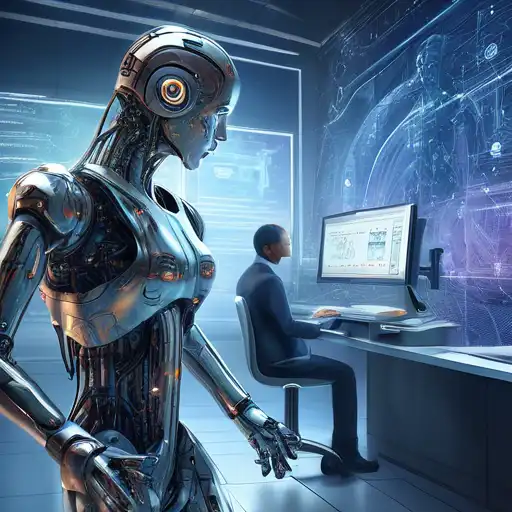Introduction to AI and Machine Learning
In the rapidly evolving world of technology, Artificial Intelligence (AI) and Machine Learning (ML) are two terms that often come up in discussions about the future of computing and automation. While they are closely related, they are not the same thing. This article aims to demystify these concepts and highlight the key differences between them.
What is Artificial Intelligence?
Artificial Intelligence is a broad field of computer science focused on creating systems capable of performing tasks that typically require human intelligence. These tasks include problem-solving, recognizing speech, learning, planning, and understanding natural language. AI can be categorized into two types: narrow AI, which is designed to perform a narrow task (e.g., facial recognition or internet searches), and general AI, which can perform any intellectual task that a human being can.
What is Machine Learning?
Machine Learning is a subset of AI that involves the development of algorithms that allow computers to learn from and make decisions based on data. Instead of being explicitly programmed to perform a task, ML systems use statistical techniques to learn patterns in data and improve their performance over time. ML is behind many of the services we use today, such as recommendation systems on Netflix and Amazon, and voice assistants like Siri and Alexa.
Key Differences Between AI and Machine Learning
- Scope: AI encompasses a wider range of technologies and applications, while ML is specifically focused on enabling machines to learn from data.
- Functionality: AI systems can perform tasks that mimic human intelligence, whereas ML systems are designed to learn and improve from experience without being explicitly programmed.
- Dependency: All ML is AI, but not all AI is ML. ML is one of the ways to achieve AI.
How AI and Machine Learning Work Together
AI and ML often work hand in hand to create intelligent systems. For example, an AI-powered chatbot may use ML to understand and respond to user queries more effectively over time. Similarly, autonomous vehicles use AI to make decisions on the road, with ML algorithms continuously learning from vast amounts of driving data to improve safety and efficiency.
Future Trends in AI and Machine Learning
The future of AI and ML is incredibly promising, with advancements in deep learning, natural language processing, and computer vision leading the way. These technologies are set to revolutionize industries such as healthcare, finance, and transportation, making processes more efficient and personalized. As we continue to explore the potential of AI and ML, it's clear that their impact on society and the economy will be profound.
For more insights into the latest tech trends, check out our tech trends section.
Conclusion
Understanding the difference between AI and Machine Learning is crucial for anyone looking to navigate the future of technology. While AI offers the vision of machines capable of human-like intelligence, ML provides the tools and techniques to make this vision a reality. Together, they are shaping a future where intelligent systems enhance every aspect of our lives.
